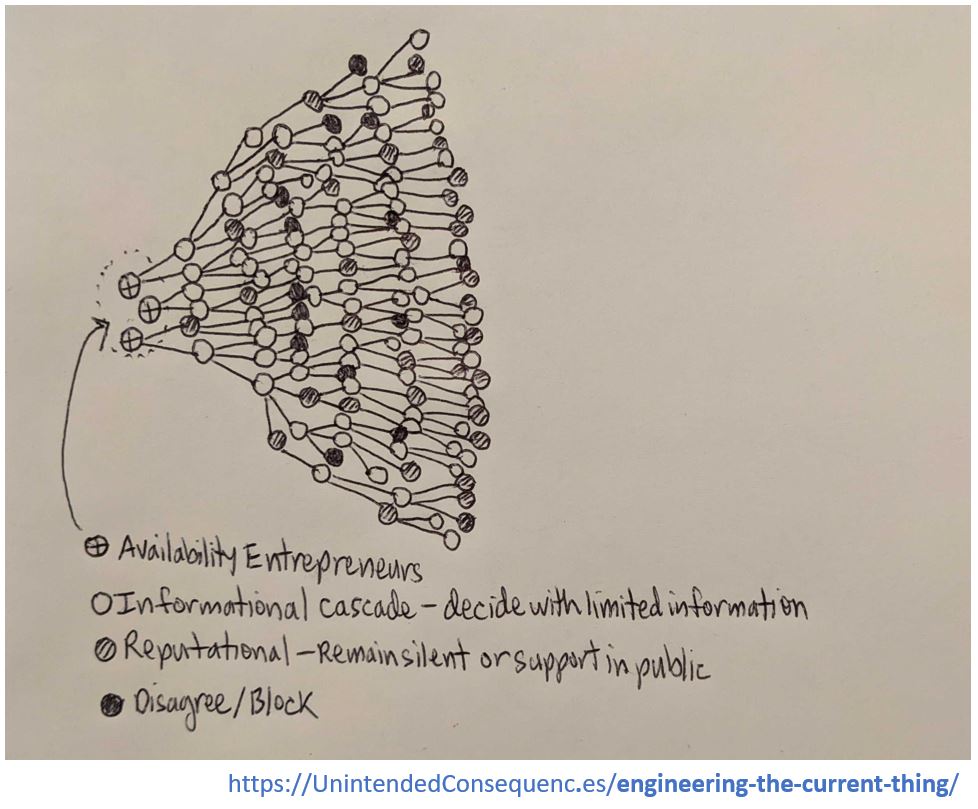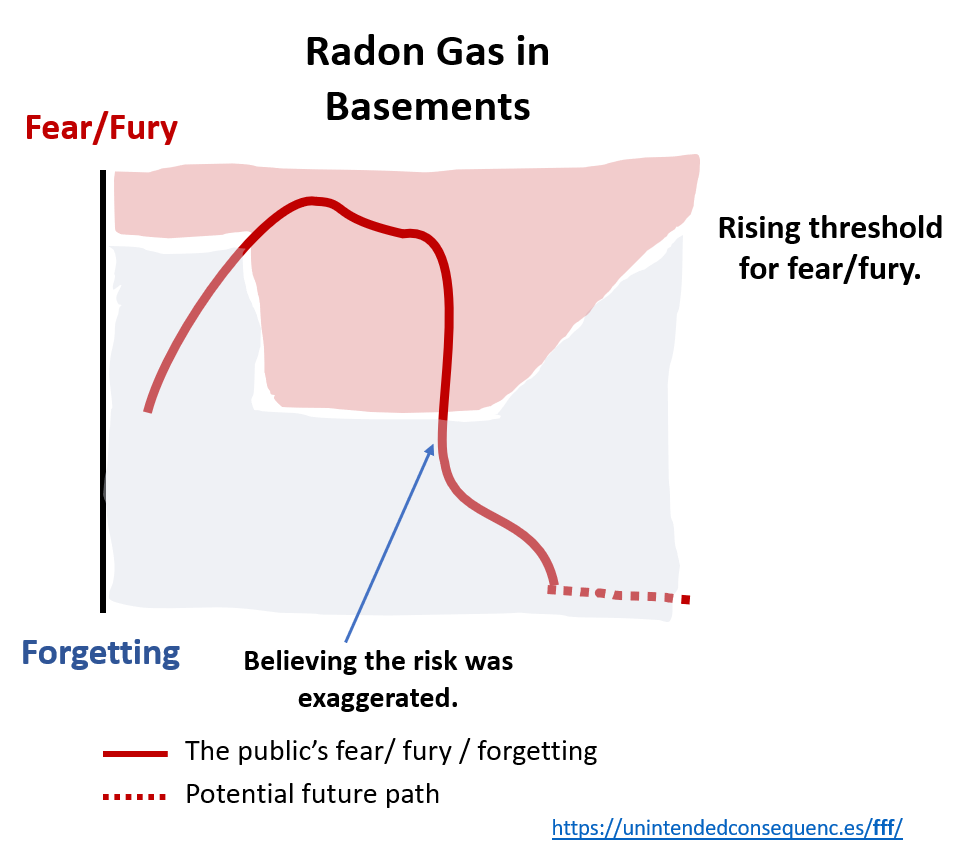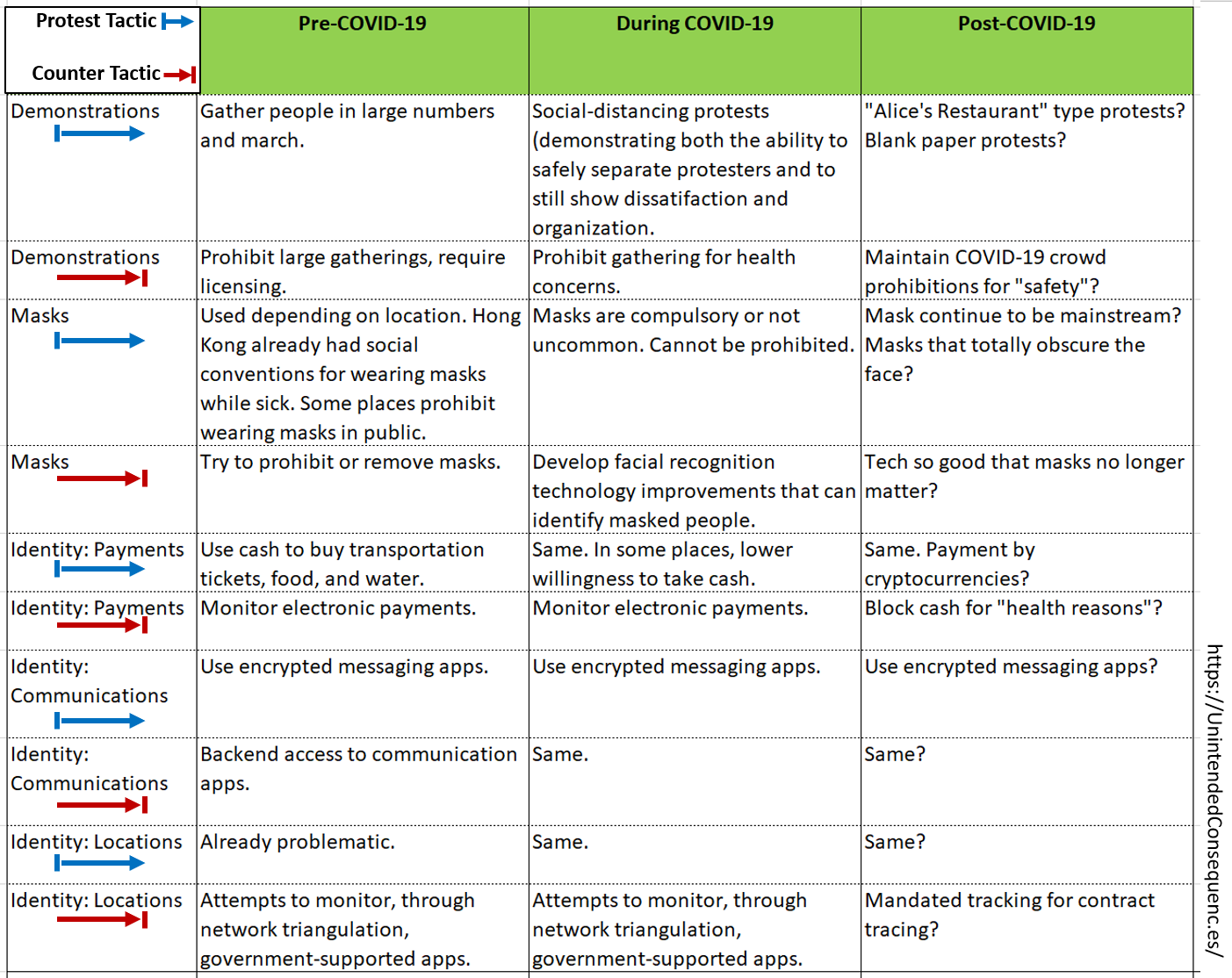When physicist Richard Feynman returned from college his father asked him something, as he later recounted: “‘When an atom makes a transition from one state to another it emits a particle of light called a photon… Well is the photon in the atom ahead of time? Or if there is no photon there to start with, where does it come from?’ So I said that the view is that the photon numbers aren’t conserved, they are just created by the motion of the electron. It’s like the sound that I’m making now wasn’t in me, like in a bag… There’s no word bag you have inside where you use up the words as they come out. You just make them as you go along.”
The Cristero War
In 1917, in the midst of a civil war, the Mexican government wrote a new constitution that limited the power and reach of the Catholic Church. Those key articles: Article 3 (enforcing mandatory secular education), Article 27 (redistributing large estates, including church lands), and Article 130 (prohibiting religious groups from owning real estate and mandating the separation of church and state) went unenforced at first.
That changed in 1924 with Mexico’s president Plutarco Elías Calles, an atheist committed to suppressing religious influence in a revolutionary country. Enforcing those three articles sparked a Catholic rebellion known as the Cristero War.
The first acts of rebellion were social, in the form of economic boycotts, but the rebellion turned violent from 1926 to 1929.
Catholics started fighting the government in Jalisco, Michoacan, Zacatecas, Guanajuato, Durango, and other Mexican states. President Calles escalated the situation by suspending Catholic masses and requiring priests to register with the government. In some parts of Mexico, like Chihuahua, only one priest was allowed to serve the entire state.
The government also used the policy of reconcentración — the forced resettling of people from destroyed villages. Ironically, that policy actually helped spread the revolt around the country, as participants were moved around.
The Cristeros, mostly ordinary civilians and priests without military training, soon understood that they needed more relevant military expertise. To gain that expertise, the movement hired Enrique Gorostieta Velarde to be their new general.
While Gorostieta had military experience, he was also an anti-cleric. But Gorostieta fought for the Cristeros because they paid him well and he wanted to get back to military life. Also because he thought he would be able to control the post-war government. Secretly, he planned it to be secular.
While the Cristeros had moral purpose, determination, and some expertise, they faced a national army. But even with the Cristeros’ impromptu methods, the war ended up costing the government one-third of its annual budget and 100,000 lives — 60% of which were on the government side. The Cristeros lost, but certainly made the government earn a costly win.
After the war, the Mexican government imposed even more secular policies. The Church agreed to cease support for the fighting, people were allowed to return to public worship, but other anti-clerical laws remained. Priests were given the Catch-22 of having to marry if they wanted to practice their faith. School teachers had to take a public oath of atheism. And in a less extreme version of the French Revolution’s “Cult of the Supreme Being,” the government created a new state church.
While the Cristeros lost the war, their movement didn’t completely disappear. The Mexican government also only reached their secular goals temporarily.
Learning about the Cristeros I had to wonder: what happens when a group, once powerful, is suppressed or disbanded? Where do its members go?
The Institution’s Instinct
We don’t need war to show that an institution’s members have a collective survival instinct. When an institution is banned, sidelined, or its funding is cut, some of its members don’t give up. Across time, Cristeros and other suppressed groups responded in creative ways.
And while the Cristero example is more obviously one involving religious beliefs, other groups fighting for secular beliefs exhibit similar behavior. One of the lessons of the 20th Century is that some secular beliefs are very much like religious ones.
That means that the group doing the suppressing might consider when and how to push.
After the Bag Pops
Where do members of a newly suppressed group go? There are some patterns of behavior from the Cristeros and others.
Relocation. For example, some Cristeros immigrated to the US, where they attempted to raise money to send in support of the war to Mexico, as well as other affected countries.
Assistance from External Sources. At the parish level, the Catholic Church is and was more loosely organized than the Communist International, for example. That affected the speed at which the Cristeros could work, but there was still some support from outside Mexico.
Assistance to External Beneficiaries. Helping other groups in a similar situation. For example, there is some evidence that Cristeros assisted the (anti-Communist) Nationalists in the Spanish Civil War.
Unlocking of Prohibited Resources. The Cristeros opened the war up to women. Their Feminine Brigades of St. Joan of Arc was composed of women who supported the Cristeros, helped preserve access to Catholic Mass when it was banned, and provided ammunition and medical care.
Internal Sabotage. I didn’t find direct Cristero examples of this, but the CIA wrote the manual on this artisanal method of sabotaging your own institution.
Patience. Cristeros reemerged to fight socialism in Mexico in the 1930s and 1940s.
Some Successful and Failed Attempts to Eliminate Institutions
These aren’t perfect examples but I think we can learn from them.
Mostly Successful (for a time or long-term):
- Henry VIII outlawed Catholicism and created of the Church of England as a new state religion. (The Church of England still survives, but Catholicism eventually returned.)
- Suppression of local languages such as Welsh, Catalan, Hawaiian, and many others. (Some have made comebacks, though remaining minor compared to their earlier significance.)
- Denazification and demilitarization in post-war Germany and Japan. (The countries are very different than they were during the war.)
- Elimination of Nationalist opposition in mainland China after the Civil War. (Pretty clear-cut example.)
- The work of the exiled Ayatollah Khomeini to overthrow Iran’s secular Pahlavi dynasty, culminating in the 1979 Iranian Revolution. (About to reverse for over 45 years.)
Mostly Failed (for a time or long-term):
- The French Revolution’s attempt to ban Catholicism and replace it with the short-lived state-created Cult of Reason.
- The English Civil War. A quick transition from monarchy to Cromwell’s Puritanical rule and back to monarchy.
- Some of the US’ attempts to diminish Communist uprisings. (While many attempts originally failed they succeeded long-term as more countries moved away from Communism.)
- Mexico’s Cristero War. A generational win for Mexico’s government that was erased afterward as Catholic influence returned.
The patterns that we see from these examples include:
- State repression radicalizes individuals who would otherwise not have engaged in rebellion, as there would be little to rebel against.
- Exiled members form resistance movements, sometimes in other countries, forming a new front which the domestic government must fight.
- Institutional values become a global rallying point, attracting supporters.
- Other groups, seeking advantage over the home country, provide ideological or military support.
- Displaced groups spread their ideology, skills, or violence internationally, whether or not the home country suffers.
What leads to failed suppressions or eliminations?
The displaced succeed when they have strong external allies, they maintain a safe territory, they adapt to the new circumstances, or they fit within larger regional or global trends.
But if you ban, cancel, heavily restrict, or otherwise eliminate an institution, its people (if they are living) still have to go somewhere. Where do they go?
They might take passive approaches:
- Some just Ride off into the sunset. They retire and don’t exert influence. They might be at the end of their work or activist lives, disinterested in fighting, and passively give in.
- Others might give up on the old mission and seek new roles. They find unbanned institutions that either share their values or that value their skills. Still, this is acceptance of loss.
The threatened group may take middle-way approaches:
- They subvert the new institutions that oppose their old ones. This subversion can be simple, as in the CIA sabotage playbook (slow down progress through endless meetings, lose paperwork, etc).
- They embrace those who should be enemies or non-players, though this can go both ways for them (see Enrique Gorostieta Velarde above), again just to harm the group that disrupted them.
They may take more active approaches:
- They use skills, network, and ideology to get paid in new roles, as I wrote about in Narrative Capture. This is probably limited to the more senior or experienced members of the old institution.
- They use skills, network, and ideology to continue their old mission. They form new groups in their own country or elsewhere.
If you are the new institution, you are at an advantage if those from the old institution have irrelevant or minimal skills, if you can make their network powerless, and if you can turn public opinion against the old ideology. If you don’t have those advantages, even if the change you have made is beneficial for the population as a whole, years later you can wake up to chaos.
Tactics to succeed as the new institution:
- Use a very strong top-down approach, including severe prison sentences and executions for those from the banned institution. This approach will be too strong for democratic countries to stomach except in extreme situations.
- Generate grassroots appeal for the change, change cultural perspective, foment hatred of the institution or way things were done in the past.
- Where you cannot go strong and fast, take the generational approach and go broad and slow. Change things from the inside, as the “long march through the institutions” radicalized western universities.
- Distinguish the bureaucrats and the otherwise unemployable from the true believers who would work for their cause unpaid and who would even die for it. Give new, harmless, temporary roles to the bureaucrats and otherwise unemployable. Employ them until their passion or relevance declines.
For me, a grand lesson of the Cristero War is the one of the “word bag” that Feynman alluded to above. There was no bag of violence in reserve that had to be used or that could be used up. But when the conditions changed, new violent behavior emerged from an otherwise peaceful group.
Consider
- In the case of the Cristeros, those institutional instincts of self preservation, spreading the message, gaining support, and more would not have emerged had the Mexican government refrained from its attacks.
- If you don’t want to trigger the institutional instinct, give institutional members a way out.
- Evaluate whether institutional members are true believers or bureaucrats collecting paychecks.
- Evaluate whether institutional members can easily find a place (employment, meaning) elsewhere or if they will be pushed into a corner and fight harder than you expect.
- In the process you may produce martyrs and saints that create long-term quiet strength. For the Cristeros, these include Father José Reyes Vega and Father Aristeo Pedroza.



